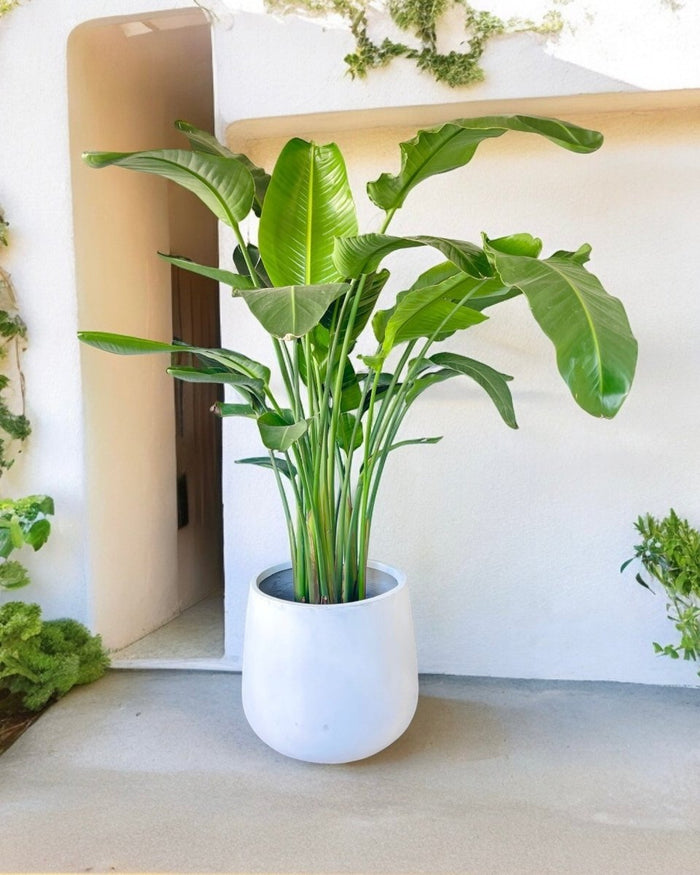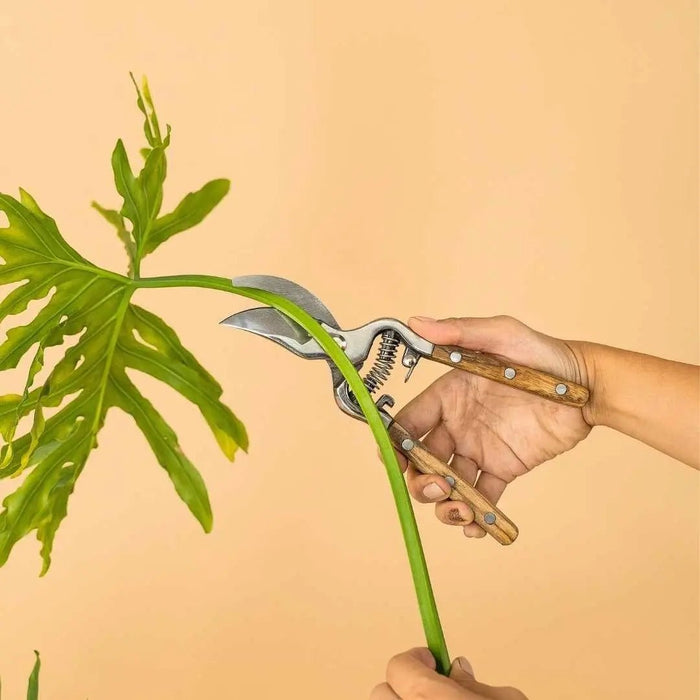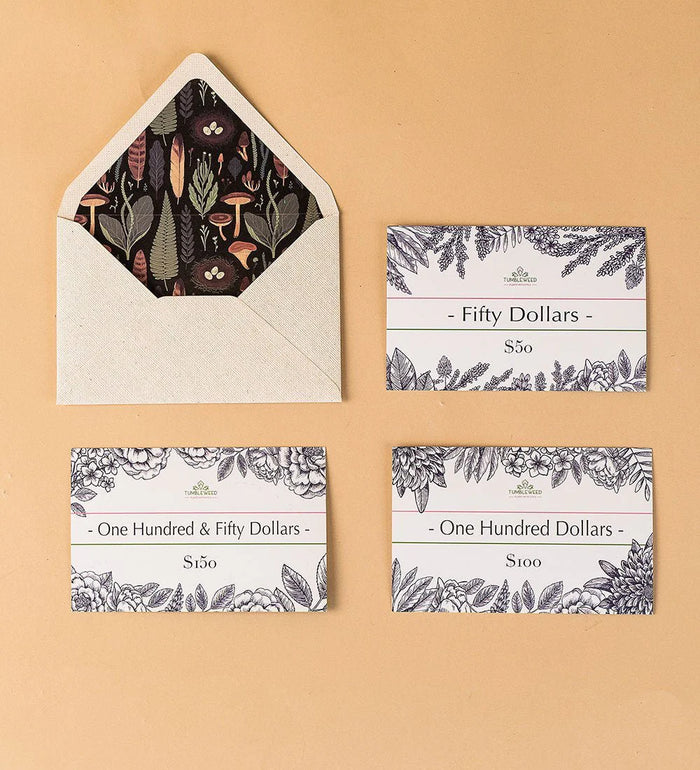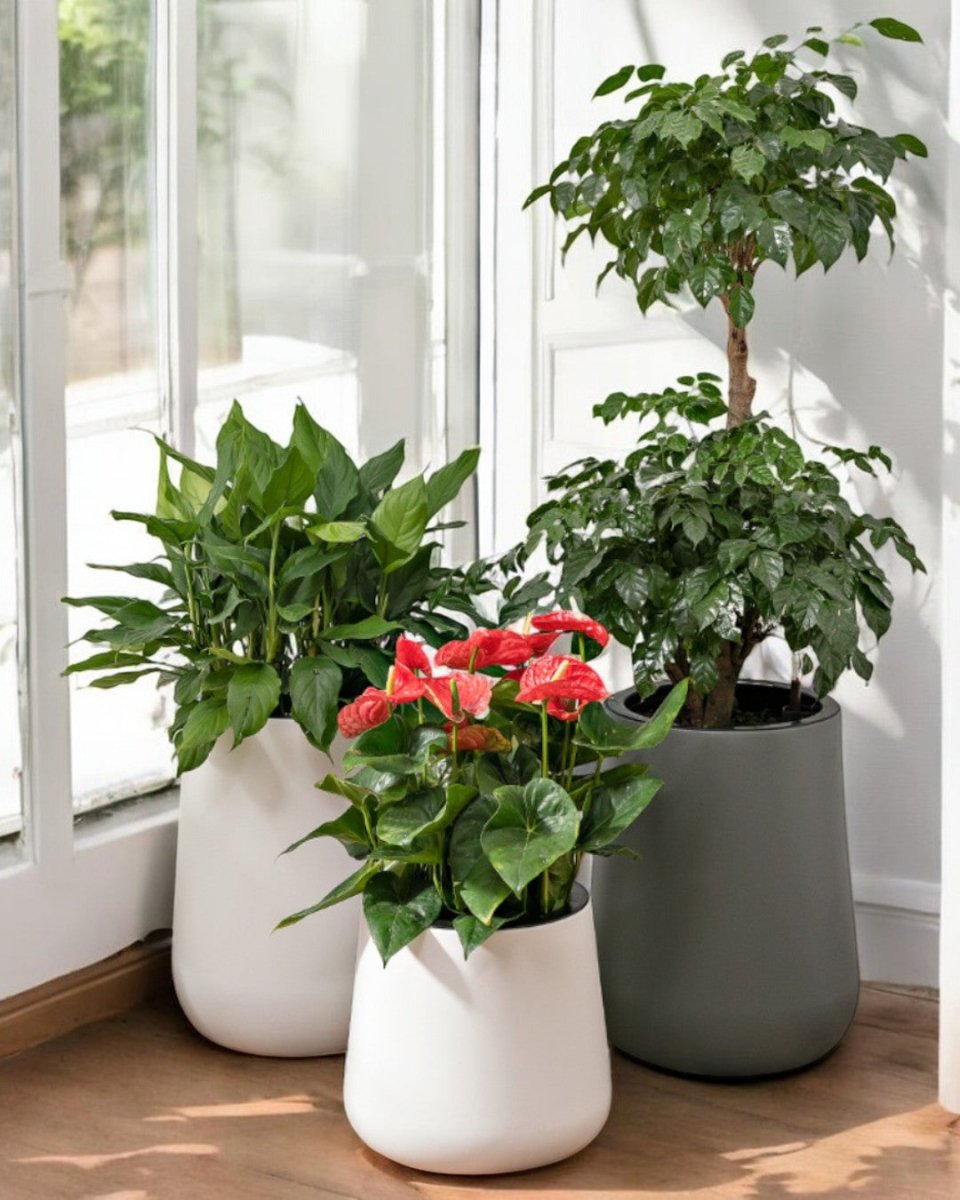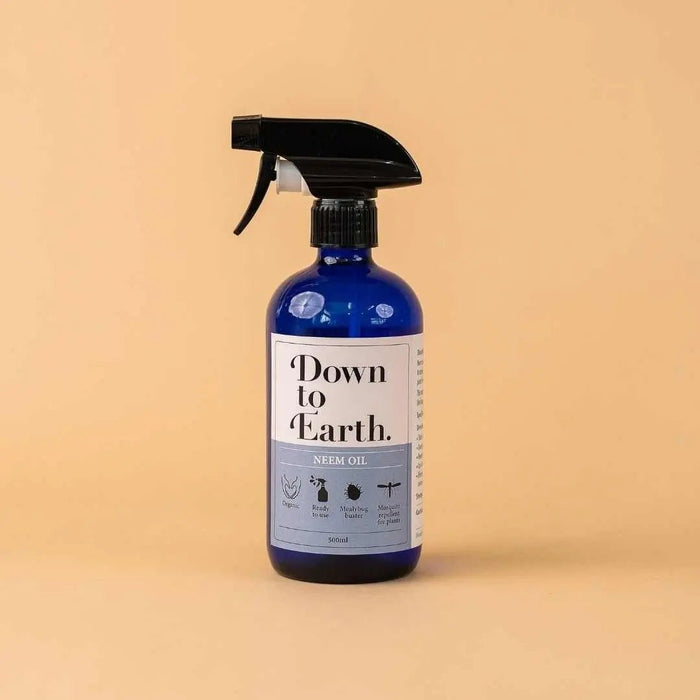Create a Pet-friendly Home with These Safe Plants
Posted on November 05 2024
Creating a Pet-Friendly Home: Safe Plants for Cats and Dogs

Creating a pet-friendly home involves more than just choosing the right toys and treats for your furry friends. One important aspect is ensuring that the plants in your home are safe for your pets. In this guide, we will explore how you can enhance your living space with beautiful greenery that is non-toxic to cats and dogs. By selecting the right plants, you can transform your home into a safe and inviting environment for both your family and your pets. Let's delve into a world where nature and pet-friendliness coexist harmoniously, and discover the top safe plants that will bring life and freshness into your space without posing a threat to your beloved companions.
Choosing Safe Plants for Different Pets
When it comes to creating a vibrant indoor environment with plants, pet owners must be mindful of selecting flora that are safe for their furry companions. Many common household plants can pose a threat to pets if ingested, making it crucial to curate a pet-friendly green space. Here's a comprehensive guide on choosing safe plants for various pets:.
Cat-friendly Plants: Safe Varieties and Their Advantages
-
Spider Plant: Not only safe for cats but also an excellent air purifier, making it a beneficial addition to any home.

-
Areca Palm: Another cat-friendly plant that is non-toxic and helps in improving air quality.

- Cat Grass: Cats enjoy nibbling on grass, and having cat grass indoors can satisfy their natural urge to graze.
Dog-friendly Plants: Non-toxic Options and Positive Impacts
-
Rubber Plant: Safe for dogs and adds a touch of lushness to your living space.

- Blue Echeveria: A succulent that is non-toxic to dogs and adds a modern touch to your decor.
- Camellia: A dog-safe flowering plant that brings beauty without posing a risk to your canine companion.
Ideal Plants for Birds, Rabbits, and Other Pets
- Birds: Consider adding a Bird's Nest Fern, Spider Plant, or Parrot's Beak to your home to create a safe and stimulating environment for your feathered friends.
- Rabbits: Safe herbs like Oregano, Mint, and Dill can provide both nutrition and enrichment for your bunny.
- Other Pets: Opt for pet-safe plants such as Christmas Cactus, Swedish Ivy, and Ponytail Palm to enhance the well-being of your small critters.
Ensuring Pet Safety and Well-being Through Plant Selection
Creating a pet-friendly indoor garden goes beyond aesthetics; it is a vital aspect of responsible pet ownership. By carefully choosing safe plants, pet owners can provide enriching environments for their beloved animals. Here are additional tips to enhance pet safety and well-being through plant selection:.
-
Research Extensively: Before introducing any new plant to your home, research its toxicity level and potential effects on pets. It's essential to be well-informed about the plants you bring into your living space.
-
Consult with Experts: When in doubt, consult with your veterinarian or a pet specialist for guidance on selecting the most suitable plants for your specific type of pet. They can offer valuable insights tailored to your pet's needs.
-
Consider Pet Preferences: Some pets may have preferences for certain types of plants. Observing your pet's behaviour around plants can help you determine their likes and dislikes, enabling you to create a more enjoyable environment for them.
-
Rotate Plants Safely: To keep your indoor garden engaging for your pets, consider rotating plants periodically. This not only prevents boredom but also ensures that your pets have access to a variety of safe foliage.
By following these guidelines and incorporating safe plants into your home, you can promote a harmonious coexistence between your plant babies and furry friends. Remember, a pet-safe indoor garden not only benefits your pets' well-being but also enhances the overall quality of life in your household. Make informed decisions when selecting plants, and enjoy the beauty and tranquillity of a pet-friendly green space.
Caring for Your Pet-friendly Plants
Essential Plant Care Tips: Watering, Light, and Soil
Taking care of your pet-friendly plants involves understanding their specific needs. Proper watering, adequate light exposure, and suitable soil conditions are crucial for their well-being.
Common Plant Care Mistakes to Avoid
It's easy to unintentionally harm your pet-friendly plants if you're not careful. Avoid overwatering, inadequate light, and using the wrong type of soil. These mistakes can lead to issues like root rot, stunted growth, or wilting.
Optimal Plant Placement within a Pet-friendly Home
When arranging your pet-friendly plants in your home, consider your pets' safety. Some plants may be toxic to animals if ingested. Keep these out of reach or opt for pet-safe varieties. Additionally, ensure plants receive enough sunlight without being in direct paths where pets may knock them over.
Expanding Your Plant Collection
As a plant enthusiast, you may find yourself wanting to expand your indoor garden. When selecting new additions, research their toxicity levels to pets. Opt for non-toxic varieties or place toxic plants in areas completely inaccessible to your furry friends. Remember to gradually acclimate new plants to your home environment to prevent shock.
Creating a Plant Care Routine
Consistency is key when caring for pet-friendly plants. Establish a watering schedule based on each plant's needs. Some may require more frequent watering, while others prefer drier conditions. Monitor light exposure and consider rotating plants periodically to promote even growth. Regularly inspect leaves for signs of pests or disease.
Enhancing Your Pet-friendly Plant Environment
Incorporate plant accessories like humidifiers or pebble trays to create optimal growing conditions. Humidity-loving plants will thrive in a more humid environment. Be mindful of temperature fluctuations and drafts that can stress your plants. Grouping plants with similar care requirements can simplify maintenance tasks.
Educating Yourself on Plant Care
Stay informed about the specific care requirements of each plant species in your collection. Join online plant communities or attend local workshops to exchange tips and tricks with fellow plant lovers. Understanding the individual needs of your plants will help you provide the best possible care for them.
By following these comprehensive plant care tips, you can create a thriving indoor garden that is safe for both your plants and your beloved pets.
Incorporating Pet-friendly Plants at Home
Enhancing Your Living Space with Pet-safe Plants.
Integrating Plants into Your Interior Design.
Creating Safe Plant Zones for Pets.
Thinking of bringing some greenery into your home but worried about your furry friends' safety? Incorporating pet-friendly plants is a wonderful way to enhance your living space while ensuring your pets stay safe. Let's explore how you can integrate these plants seamlessly into your home decor, creating designated safe plant zones for your beloved pets.
Enhancing Your Living Space with Pet-safe Plants
-
Choosing non-toxic plants: Opt for pet-safe plants like Spider Plant, Boston Fern, or Areca Palm that are non-toxic to cats and dogs.
-
Hanging plants: Consider hanging plants like Spider Plant or Boston Fern to keep them out of reach of curious pets.
-
Air-purifying benefits: Not only do pet-safe plants add a touch of green to your home, but they also help purify the air, creating a healthier environment for both you and your pets.
Integrating Plants into Your Interior Design
-
Selecting planters: Choose planters that complement your interior design style, whether it's sleek modern pots or bohemian macrame hangers.
-
Grouping plants: Create visually appealing plant arrangements by grouping plants of varying heights and textures. Consider mixing in some flowering plants to add a pop of colour to your space.
-
Natural stress relievers: Indoor plants have been shown to reduce stress and boost mood levels, making your home a more relaxing environment for both you and your pets.
Creating Safe Plant Zones for Pets
-
Elevated plant stands: Place plants on tall stands or shelves to prevent pets from accessing them. This not only keeps your plants safe but also prevents any accidental ingestion by your pets.
-
Cat-friendly herbs: Incorporate cat-friendly herbs like cat grass, catnip, or mint into your plant collection. These safe alternatives can satisfy your pet's natural urge to nibble on plants.
-
Pet-safe gardening tips: If you have outdoor space, create a pet-friendly garden area with plants that are safe for your pets to explore and enjoy. Consider installing barriers or fencing to keep them away from any harmful plants.
With a little planning and consideration, you can create a harmonious environment where both your plants and pets can thrive together. By incorporating pet-friendly plants, you can enjoy the beauty of nature indoors while keeping your furry companions safe and happy. Remember to research plants before purchasing to ensure they are safe for your specific pets, and always monitor your pets' interactions with plants to prevent any mishaps.
Engaging with DIY Pet-friendly Plant Projects
Fun and Easy Plant DIYs for Pet Owners.
Many pet owners often face the challenge of incorporating plants into their homes without compromising their pet's safety. However, with a bit of creativity and research, it is possible to create a pet-friendly indoor garden that both you and your furry friend can enjoy. Here are some fun and easy plant DIYs for pet owners to try:.
- Pet-safe Plant Hangers
- Cat Grass Planter
- Hanging Herb Garden
- Dog-friendly Succulent Terrarium
Interactive Plant Activities for Pets
In addition to creating a safe environment for your pets, it's also essential to engage them in plant-related activities. Not only does this provide mental stimulation for your pets, but it also strengthens the bond between you and your furry companions. Here are some interactive plant activities for pets:.
- DIY Catnip Toys
- Interactive Treat-dispensing Planters
- Pet-friendly Herb Garden for foraging
- Sensory Garden for Dogs
Exploring the World of Pet-safe Plants
When it comes to selecting plants for your home, it's crucial to choose ones that are safe for your pets. Some common pet-friendly plants include Spider Plants, Areca Palms, and Boston Ferns. These plants not only add a touch of greenery to your space but are also non-toxic to cats and dogs. Researching pet-safe plants will give you a variety of options to enhance your indoor garden while keeping your furry friends out of harm's way.
Creating DIY Pet Enrichment Stations
DIY pet enrichment stations are a fantastic way to stimulate your pet's senses and keep them entertained. These stations can include a mix of pet-safe plants, interactive toys, and treat-dispensing puzzles. For cats, consider setting up a climbing tree near a Cat Grass Planter for them to enjoy both physical activity and nibbling on fresh greens. Dogs, on the other hand, may benefit from a Sensory Garden filled with different textures and scents to explore. These enrichment stations not only provide mental stimulation but also encourage natural behaviours in your pets.
The Importance of Training and Supervision
While incorporating plants into your pet's environment can be enriching, it's essential to provide proper training and supervision. Teach your pets which plants are safe for them to interact with and establish boundaries to prevent any accidents. Supervising your pets' interactions with plants will help you identify any potential issues early on and ensure a safe and enjoyable experience for both you and your furry companions.
DIY pet-friendly plant projects offer a wonderful opportunity to create a safe and engaging environment for your pets. By combining creativity, research, and a love for plants and animals, you can design a harmonious living space that benefits everyone in your household. Remember, the key is to prioritise your pet's safety and well-being while enjoying the beauty of nature indoors.
Ensuring a Safe Environment for Pets and Plants
Regular Monitoring of Plant Toxicity Levels
Plants can add beauty to your home, but some can be toxic to pets if ingested. It's crucial to research the plants you have in your home and understand their toxicity levels. Keep a list of all your plants and their toxicity levels handy. Regularly check on the condition of your plants to ensure they are healthy and not wilting, as decaying plants can be more appealing to curious pets. Consider consulting with a vet or a plant expert to identify safe and unsafe plant species, especially if you are unsure about any specific plant. Keep in mind that some common household plants like lilies, aloe vera, and ivy can be harmful to pets if consumed. It's also essential to be cautious when using fertilisers or pesticides around plants, as these substances can be toxic to animals. If you suspect your pet has ingested a toxic plant, contact your vet immediately for advice on the necessary steps to take.
Maintaining a Pet-friendly and Plant-safe Home
To create a harmonious environment for both your pets and plants, consider the placement of your greenery. Keep toxic plants out of reach of pets, either by hanging them or placing them on high shelves. You can also create designated pet-friendly areas in your home where you avoid placing any plants. When introducing a new plant to your household, research its toxicity levels and pet-friendliness to ensure it's a safe addition. Remember that some pets, like cats, have a natural inclination to chew on plants, so opt for pet-safe plants like spider plants, Boston ferns, or African violets. Providing alternative greens for your pets, such as cat grass for cats, can also help satisfy their urge to nibble on plants. Regularly inspect your plants for any signs of damage or wilting, as prompt action can prevent potential plant toxicity incidents. By creating a pet-friendly and plant-safe home environment, you can enjoy the beauty of indoor greenery while keeping your beloved pets out of harm's way.
Maintaining a safe environment for both pets and plants requires awareness, diligence, and proactive measures. By educating yourself on plant toxicity levels, strategically arranging your greenery, and considering your pets' behaviours, you can foster a secure and harmonious living space for all inhabitants. Remember that the well-being of your pets and the health of your plants go hand in hand, and with proper care and attention, you can create a thriving ecosystem within your home.
Conclusion
By incorporating safe plants into your home, you can create a welcoming and pet-friendly environment that benefits both you and your furry companions. With proper research and selection of non-toxic plants, you can enjoy the beauty of nature indoors while keeping your pets safe from potential hazards. Remember to always consult with a vet if you suspect your pet has ingested a plant, and enjoy the harmony of a plant-filled, pet-friendly home.







